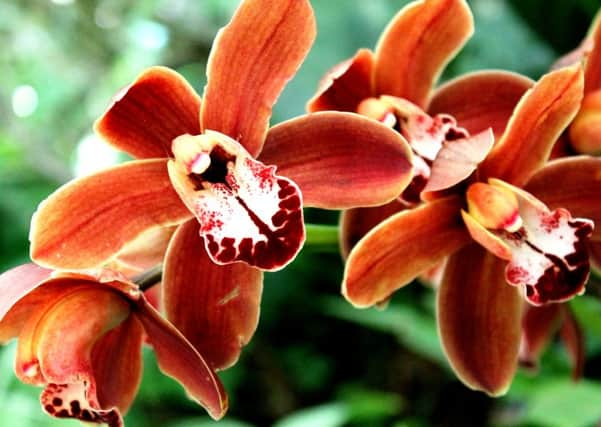Gardening: Let there be light


And it’s easy to see why. These stunning orchids are among the easiest to grow – although that doesn’t mean they don’t need a certain amount of care and attention, such as ensuring they get good light all year round – especially in winter.
And keeping an eye on the thermometer is also important; Cymbidiums like cooler growing conditions than some other tender indoor orchids, which means a winter temperature of between 10-14C (50-57F). In summer, keep the temperature below 30C (86F).
Advertisement
Hide AdAdvertisement
Hide AdWhen you’ve got that right, enjoy the long flowering period which usually means each bloom putting on a show for anything up to eight weeks. Once the blooms have faded, cut down the old stem right to the base.
Cymbidiums need only moderate watering during spring and summer, depending on the conditions. Always water from above, making sure that excess water can drain away – these are orchids which don’t like their roots to be wet.
Apply half-strength general liquid fertiliser every third watering in spring and switch to a high potassium specialist orchid fertiliser in summer.
Stop feeding altogether, or feed only occasionally in winter, using a half-strength general liquid fertiliser. Cymbidiums are best repotted in spring just after flowering.
Advertisement
Hide AdAdvertisement
Hide AdRemove the plant from its pot and if you discover a large clump of tiny bulbs, divide them by sawing through the centre of the clump and the rootball. The pieces should contain no fewer than five of these “pseudobulbs” otherwise flowering will suffer.
Cut off any diseased or dead roots and shorten the remaining healthy roots (the one that are white and firm) to about six inches.
Always use a proprietary orchid compost when you’re repotting and pack it in firmly – loose compost will cause the plant to be unstable and damage the new root tips, stopping them from growing.
Then give the plant a thorough watering ensuring that all the rootball is damp. Drain the plant to prevent the roots from becoming waterlogged.
With luck, the orchid will flourish for another couple of years when it will need repotting again.